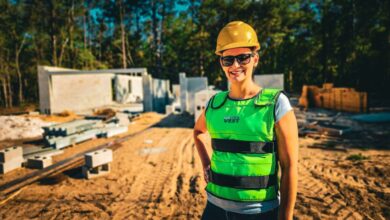Stay Safe During Record Summer Heatwaves
By M.K. Youngblood

As we slide into summer, a historic heat wave is sweeping across the U.S. Record-breaking temperatures are spreading from coast to coast, making our line of work even more dangerous.
In California, we’re experiencing highs of 105 to 107 degrees. Experiencing extreme heat, whether you’re on the West Coast, East Coast, or somewhere in between, should be taken with the utmost seriousness.
Proactive and prepared
Don’t wait until the heat gets here; it will be too late. By then, you’ll already be dehydrated and unprepared. Be prepared ahead of time.
Check the forecast in your area. Stay hydrated and keep extra fluids available. Take an extra heat break to rest to avoid heat-related illnesses. Communicate with your team if you need assistance. Hydrate, rest, and communicate.
When I was a project manager, I would always tell my team, if you need to take a break, take a break. You know your body better than anyone else. If you need to take extra heat-related rest, you take it. Five to 10 minutes of productivity isn’t worth putting yourself in harm’s way. Safety comes first, and productivity comes second. The safer you are, the faster you’ll become, and the more productive you will be.
Here are a few resources to help you stay weather-aware:
- Weather Underground (https://www.wunderground.com/). This is an interactive map with radar, high-resolution satellite imagery, severe weather alerts, and more.
- National Weather Service (NWS) Radar (https://radar.weather.gov/). The NWS Radar site displays the radar on a map along with forecasts and alerts.
- Nixle (https://www.nixle.com/). This resource keeps you up to date with relevant information from your local public safety departments and schools based on your current ZIP code.
Ultimately, you must take responsibility for your safety, don’t rely on someone else. If you see something, say something. Keep open lines of communication.
Avoid the heat of summer
Regardless of the industry, we must make a collective effort to stay safe in the heat. If someone is distracted and not feeling well due to the heat, not only are they not going to be as productive, but their accuracy is going to go down. Their perception and cognitive skills will be affected.
If you feel like your life is in danger, call 911. I was on jury duty several months ago, and thought I was having a heart attack during lunch. I recognized some telltale signs and called out for the nearest person to call 911 while I tried to sit down in the shade. If you’re able, notify a supervisor or the nearest person so more help can be dispatched. Take the appropriate action – cool yourself off, and don’t do any strenuous activity. If you’re in the middle of a heat-related illness, sip some cool water and take off any heavy clothing that may be radiating heat back into your body.

Setting the standard
In its General Duty Clause, Occupational Safety and Health Administration (OSHA) states, “employers are required to provide their employees with a place of employment that ‘is free from recognized hazards that are causing or likely to cause death or serious harm to employees.’”
California is campaigning for an ultra-high heat standard that we’ll likely see in 2023. It will apply when temperatures are 105 degrees and above. Assembly Bill (AB) No. 2243 is proposing to revise what’s considered “outside work” because, right now, it’s kind of vague. Some of the packing sheds, even though they’re under a roof in a pavilion-type structure, will be considered outdoor. There will be new indoor high heat standards, too. If it gets over 82 degrees inside, that will be considered high heat indoors.
So why is this relevant to the rest of the country? Updated regulations, especially to OSHA – which we all abide by – might be something to expect down the road.
Stay safe this summer and stay cool.
M.K. Youngblood serves as the Safety Manager at ACRT Pacific. He has more than 30 years of public service and first responder experience with core proficiency in American Indian law, American Indian culture, and disaster cleanup. Youngblood also serves as a certified instructor for the U.S. Department of Energy (National Nuclear Security Administration and Center for Radiological Nuclear Training), U.S. Emergency Management Institute, and Center for Domestic Preparedness, and the Energetic Materials Research and Testing Center (EMRTC). He holds a Bachelor of Science degree in Emergency Management and master’s degree in public administration from Concordia College. Currently, Youngblood is working toward a degree at California State University, Fresno in Disaster Archaeology – Natural and Cultural Resources with a minor in American Indian Studies.


